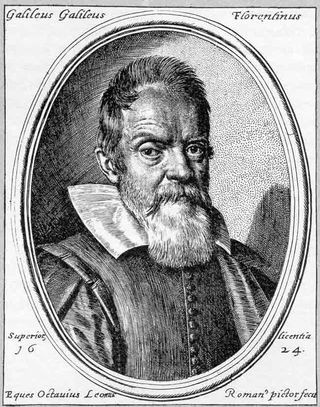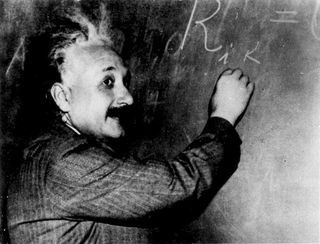The speed of light, approximately 299,792,458 meters per second, dictates the universe’s pace. Planning your Vietnamese adventure? While you might not travel at light speed, SIXT.VN ensures a swift and seamless journey. This article explores the fascinating world of light speed, its implications for space travel, and how it impacts your travel experiences in Vietnam. For convenient airport transfers, comfortable hotel bookings, and captivating Hanoi tours, explore SIXT.VN’s travel consulting, Hanoi travel deals, and Vietnam travel tips.
1. What is the Speed of Light and Why is it Important?
The speed of light, often denoted as ‘c’, is a fundamental constant in physics, representing the velocity at which light travels through a vacuum. It’s approximately 299,792,458 meters per second (about 186,282 miles per second). Why is this speed so significant?
- Universal Speed Limit: According to Einstein’s theory of special relativity, nothing in the universe can travel faster than light. As an object approaches the speed of light, its mass increases infinitely, requiring an infinite amount of energy to accelerate further.
- Defining Measurements: The speed of light is so precise and constant that it’s used to define international standard measurements like the meter, which then influences other units like miles, feet, and inches, as stated by the U.S. National Institute of Standards and Technology.
- Understanding the Universe: Light from distant stars and galaxies takes billions of years to reach us. When we observe these celestial objects, we are essentially looking back in time. Therefore, the speed of light helps astronomers understand the history and evolution of the universe.
 Abstract, futuristic image of blue light streaks radiating outward, giving the impression of rapid movement or traveling at high speed, inspired by the concept of faster-than-light travel
Abstract, futuristic image of blue light streaks radiating outward, giving the impression of rapid movement or traveling at high speed, inspired by the concept of faster-than-light travel
2. How is the Speed of Light Measured?
Measuring the speed of light has been a quest for scientists for centuries. Here’s a look at some of the key historical experiments:
- Ole Rømer’s Observations (1676): One of the earliest attempts was by Danish astronomer Ole Rømer, who studied the eclipses of Jupiter’s moon Io. He noticed that the timing of these eclipses varied depending on the Earth’s distance from Jupiter. Rømer concluded that this was because light took a measurable amount of time to travel the varying distances. Although his calculations were not perfectly accurate due to uncertainties in the size of the solar system, Rømer’s work provided the first evidence that light had a finite speed.
- James Bradley’s Calculations (1728): English physicist James Bradley made a more accurate estimation of the speed of light based on the apparent shift in the position of stars due to the Earth’s motion around the sun. His calculations were accurate to within about 1% of the currently accepted value, according to the American Physical Society.
- Hippolyte Fizeau’s Experiment (Mid-1800s): French physicist Hippolyte Fizeau used a rotating toothed wheel and a mirror to measure the time it took for a beam of light to travel a certain distance. By varying the speed of the wheel, he could calculate the speed of light.
- Léon Foucault’s Experiment (Mid-1800s): Another French physicist, Léon Foucault, improved upon Fizeau’s method by using a rotating mirror instead of a toothed wheel. Both Fizeau and Foucault’s experiments brought the measurement of the speed of light back to Earth-based methods.
- Albert Michelson’s Experiments (Late 1800s – Early 1900s): Albert Michelson dedicated much of his career to refining the measurement of the speed of light. He conducted several experiments, including one in 1879 that was considered the most accurate measurement for 40 years. Later, he built a mile-long vacuum tube to eliminate the effect of air on the speed of light, resulting in an even more precise estimate. As highlighted by the University of Virginia, Michelson significantly enhanced the precision of earlier methods.
 Galileo Galilei is credited with discovering the first four moons of Jupiter.
Galileo Galilei is credited with discovering the first four moons of Jupiter.
3. What is a Light-Year and How Does It Relate to Travel?
A light-year is the distance light travels in one year, equivalent to approximately 6 trillion miles (10 trillion kilometers). It’s a unit of distance, not time, used to measure the immense distances in the universe. How does this relate to travel, especially in the context of planning a trip to Vietnam?
- Understanding Astronomical Distances: Light-years help us grasp the vastness of space. For example, the nearest star system, Alpha Centauri, is 4.3 light-years away.
- Looking Back in Time: When we observe objects billions of light-years away, we are seeing them as they were billions of years ago, because it has taken that long for their light to reach us.
- Travel Perspective: While we can’t travel at the speed of light, understanding these distances puts our own journeys into perspective. Traveling to Vietnam might seem like a long journey, but it’s nothing compared to the distances light travels in space.
Consider this: If you could travel one light-year using a crewed spacecraft like the Apollo lunar module, the journey would take approximately 27,000 years, according to the BBC Sky at Night Magazine. This highlights the immense scale of space and the limitations of our current travel technology.
4. What is the Connection Between the Speed of Light and Special Relativity?
Albert Einstein’s theory of special relativity, a cornerstone of modern physics, is deeply intertwined with the speed of light. Here’s how:
- E=mc²: The famous equation E=mc² expresses the relationship between energy (E), mass (m), and the speed of light (c). It shows that mass and energy are interchangeable and that a small amount of mass contains an enormous amount of energy due to the large value of the speed of light squared.
- Universal Constant: Special relativity postulates that the speed of light in a vacuum is constant for all observers, regardless of their motion or the motion of the light source. This seemingly simple idea has profound implications.
- Time Dilation and Length Contraction: One consequence of the constant speed of light is that time and length are relative. As an object approaches the speed of light, time slows down for the object relative to a stationary observer (time dilation), and its length contracts in the direction of motion (length contraction).
- Mass Increase: As an object’s speed increases, its mass also increases. At the speed of light, the object’s mass would become infinite, requiring an infinite amount of energy to maintain that speed. This is why nothing with mass can reach the speed of light.
 Albert Einstein writing on a blackboard.
Albert Einstein writing on a blackboard.
5. Is Anything Faster Than the Speed of Light?
While nothing within the universe can travel faster than the speed of light, there are a few nuances to this rule:
- Expansion of the Universe: The universe itself is expanding, and distant galaxies are moving away from us at speeds that can exceed the speed of light. This is because the expansion of space is not limited by the laws of special relativity, which apply to objects moving within space. As astrophysicist Paul Sutter explains, at vast distances, the expansion rate surpasses the speed of light.
- Quantum Entanglement: Quantum entanglement is a phenomenon where two particles become linked in such a way that they share the same fate, no matter how far apart they are. If you measure the property of one particle, you instantly know the property of the other, even if they are light-years away. While this appears to be instantaneous communication, it cannot be used to transmit information faster than light, so it doesn’t violate special relativity.
6. Does Light Ever Slow Down?
While the speed of light in a vacuum is constant, light can indeed slow down when it travels through a medium other than a vacuum.
- Refractive Index: The amount that a material slows down light is called its refractive index. When light enters a material, it interacts with the atoms and molecules in the material, causing it to slow down.
- Examples: Light travels slower through air than through a vacuum, and it travels even slower through materials like water or glass. Diamond, for example, slows down light significantly due to its high refractive index, as reported by PBS NOVA.
- Trapping and Stopping Light: Scientists have even managed to trap and stop light completely under certain conditions, such as within ultra-cold clouds of atoms, according to a 2001 study published in Nature.
 A sparkling diamond amongst dark coal-like rock.
A sparkling diamond amongst dark coal-like rock.
7. Can Humans Travel Faster Than Light?
The possibility of faster-than-light (FTL) travel has captivated scientists and science fiction writers alike. While it remains firmly in the realm of speculation, here are some ideas that have been proposed:
- Warp Drives: Warp drives are hypothetical propulsion systems that would allow spacecraft to travel faster than light by warping the space around them. The idea is that the spacecraft would remain stationary within a “warp bubble,” while the space in front of the bubble would be compressed and the space behind it would be expanded, effectively moving the spacecraft faster than light relative to distant objects.
- Wormholes: Wormholes are theoretical tunnels through spacetime that could connect two distant points in the universe. Traveling through a wormhole could potentially allow for faster-than-light travel, but their existence has not been confirmed, and they may require exotic matter with negative mass-energy density to remain open.
- Challenges: Overcoming the speed of light barrier would require a fundamental shift in our understanding of physics and the manipulation of spacetime itself. As Seth Shostak from the SETI Institute noted, without FTL travel, interstellar journeys would take hundreds of thousands of years.
8. How Does the Speed of Light Relate to Travel Planning in Vietnam?
While the speed of light might seem irrelevant to planning a trip to Vietnam, the underlying principles of efficiency and speed are very much applicable. Just as physicists strive to push the boundaries of what’s possible, SIXT.VN aims to streamline your travel experience, making it as fast and efficient as possible.
- Time is Valuable: Whether you’re exploring the bustling streets of Hanoi or relaxing on the beaches of Phu Quoc, time is precious. SIXT.VN helps you make the most of your time by providing convenient and reliable travel services.
- Efficient Transfers: Just as light travels at a constant speed in a vacuum, SIXT.VN ensures smooth and timely airport transfers, minimizing delays and maximizing your travel enjoyment.
- Seamless Bookings: Booking hotels and tours with SIXT.VN is quick and easy, saving you valuable time and effort.
- Expert Guidance: SIXT.VN provides expert travel consulting, helping you plan the perfect itinerary and navigate the complexities of traveling in Vietnam.
9. How SIXT.VN Can Help You Optimize Your Travel Speed (and Experience) in Vietnam
While you can’t literally travel at the speed of light, SIXT.VN can significantly enhance the speed and efficiency of your travel experience in Vietnam. Here’s how:
| Service | Benefit |
|---|---|
| Airport Transfers | Ensures timely and stress-free transportation from the airport to your hotel, eliminating delays and maximizing your relaxation time. |
| Hotel Bookings | Offers a wide selection of hotels to fit your budget and preferences, with easy booking and instant confirmation. |
| Tour Packages | Provides curated tour packages that showcase the best of Vietnam, saving you the time and effort of planning your own itinerary. |
| Flight Bookings | Helps you find the best deals on flights to and from Vietnam, with flexible options to suit your travel dates. |
| Travel Consulting | Offers expert advice and personalized recommendations to help you plan the perfect trip, tailored to your interests and budget. |
| Local Transportation | Arranges reliable transportation within cities, allowing you to explore the destination without worrying about navigation or public transportation schedules. |
| 24/7 Customer Support | Provides immediate assistance for any unexpected issues or travel disruptions, ensuring a smooth and stress-free experience. |
| Language Support | Offers multi-language support to overcome communication barriers, making it easier to interact with locals and navigate unfamiliar environments. |
| Personalized Travel Plans | Tailors travel plans based on individual preferences, optimizing for cultural immersion, adventure, or relaxation, ensuring a memorable and fulfilling journey. |
| Visa Assistance | Guides through the visa application process, ensuring compliance with immigration regulations and simplifying the travel preparation phase. |
Address: 260 Cau Giay, Hanoi, Vietnam
Hotline/Whatsapp: +84 986 244 358
Website: SIXT.VN
10. FAQs About the Speed of Light
Here are some frequently asked questions about the speed of light:
- What is the exact speed of light in a vacuum? The speed of light in a vacuum is exactly 299,792,458 meters per second (approximately 186,282 miles per second).
- Why is the speed of light so important in physics? It is a fundamental constant that serves as a universal speed limit and is crucial for understanding the relationship between energy, mass, space, and time.
- Can anything travel faster than the speed of light? Within the universe, nothing can travel faster than light, but the universe’s expansion can cause distant galaxies to recede from us at speeds exceeding the speed of light.
- Does light travel at the same speed in all materials? No, light travels slower in materials like water, glass, and diamond compared to its speed in a vacuum.
- How was the speed of light first measured? One of the earliest measurements was by Ole Rømer in 1676, who observed the eclipses of Jupiter’s moon Io and noticed variations in their timing.
- What is a light-year? A light-year is the distance that light travels in one year, approximately 6 trillion miles (10 trillion kilometers).
- How does the speed of light relate to Einstein’s theory of special relativity? Einstein’s theory postulates that the speed of light in a vacuum is constant for all observers, regardless of their motion or the motion of the light source.
- Could humans ever travel faster than light? While there are theoretical concepts like warp drives and wormholes, faster-than-light travel remains speculative and would require a significant shift in our understanding of physics.
- Why is the speed of light squared in the equation E=mc²? The speed of light is squared because it reflects the relationship between energy and mass, indicating the immense amount of energy contained within even small amounts of mass.
- How does the speed of light impact our understanding of the universe? It allows astronomers to study the universe as it was in the past, as light from distant objects takes billions of years to reach us, giving insight into the history and evolution of the cosmos.
Don’t wait! Let SIXT.VN be your guide to experiencing Vietnam with speed, convenience, and unforgettable memories. Contact us today to start planning your dream trip!
Bibliography
- Aristotle. “On Sense and the Sensible.” The Internet Classics Archive, 350AD. http://classics.mit.edu/Aristotle/sense.2.2.html.
- D’Alto, Nick. “The Pipeline That Measured the Speed of Light.” Smithsonian Magazine, January 2017. https://www.smithsonianmag.com/air-space-magazine/18_fm2017-oo-180961669/.
- Fowler, Michael. “Speed of Light.” Modern Physics. University of Virginia. Accessed January 13, 2022. https://galileo.phys.virginia.edu/classes/252/spedlite.html#Albert%20Abraham%20Michelson.
- Giovannini, Daniel, Jacquiline Romero, Václav Potoček, Gergely Ferenczi, Fiona Speirits, Stephen M. Barnett, Daniele Faccio, and Miles J. Padgett. “Spatially Structured Photons That Travel in Free Space Slower than the Speed of Light.” Science, February 20, 2015. https://www.science.org/doi/abs/10.1126/science.aaa3035.
- Goldzak, Tamar, Alexei A. Mailybaev, and Nimrod Moiseyev. “Light Stops at Exceptional Points.” Physical Review Letters 120, no. 1 (January 3, 2018): 013901. https://doi.org/10.1103/PhysRevLett.120.013901.
- Hazen, Robert. “What Makes Diamond Sparkle?” PBS NOVA, January 31, 2000. https://www.pbs.org/wgbh/nova/article/diamond-science/.
- “How Long Is a Light-Year?” Glenn Learning Technologies Project, May 13, 2021. https://www.grc.nasa.gov/www/k-12/Numbers/Math/Mathematical_Thinking/how_long_is_a_light_year.htm.
- American Physical Society News. “July 1849: Fizeau Publishes Results of Speed of Light Experiment,” July 2010. http://www.aps.org/publications/apsnews/201007/physicshistory.cfm.
- Liu, Chien, Zachary Dutton, Cyrus H. Behroozi, and Lene Vestergaard Hau. “Observation of Coherent Optical Information Storage in an Atomic Medium Using Halted Light Pulses.” Nature 409, no. 6819 (January 2001): 490–93. https://doi.org/10.1038/35054017.
- NIST. “Meet the Constants.” October 12, 2018. https://www.nist.gov/si-redefinition/meet-constants.
- Ouellette, Jennifer. “A Brief History of the Speed of Light.” PBS NOVA, February 27, 2015. https://www.pbs.org/wgbh/nova/article/brief-history-speed-light/.
- Shea, James H. “Ole Ro/Mer, the Speed of Light, the Apparent Period of Io, the Doppler Effect, and the Dynamics of Earth and Jupiter.” American Journal of Physics 66, no. 7 (July 1, 1998): 561–69. https://doi.org/10.1119/1.19020.
- Siegel, Ethan. “The Failed Experiment That Changed The World.” Forbes, April 21, 2017. https://www.forbes.com/sites/startswithabang/2017/04/21/the-failed-experiment-that-changed-the-world/.
- Stern, David. “Rømer and the Speed of Light,” October 17, 2016. https://pwg.gsfc.nasa.gov/stargaze/Sun4Adop1.htm.



